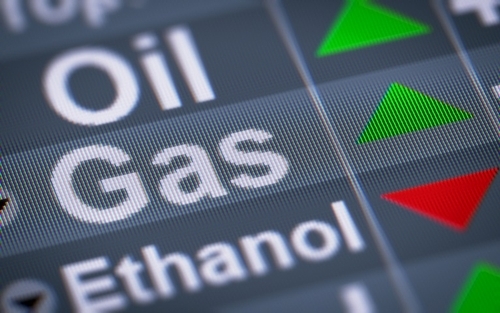The natural gas financial market exists to facilitate risk transference. The market includes multi-lateral and bilateral transactions arranged by the transacting parties (and/or their brokers) as well as transactions occurring on commodity exchanges. The commodity exchanges were founded to ease transacting in commodities by providing market participants with market transparency and standardized contractual terms as well as by addressing issues related to liquidity, credit, and settlements.

Every day, across the United States, natural gas is traded at dozens of "market hubs". These markets, often located at the intersection of two or more natural gas pipelines, are reasonably liquid locations where market participants make or take delivery of natural gas. Market participants buy and sell natural gas at these markets for delivery the next day and well into the future. The most commonly traded periods are the "spot" period, in which the natural gas flows the following day, and the "prompt month" period, in which gas flows ratably over the next calendar month and which trades most commonly during "bid week" (the last five days preceding the month of flow). Although these are the most common transacting periods, market participants can buy and sell natural gas well into the future, though liquidity diminishes as delivery periods move further into the future.The ability to get natural gas from producing regions to consuming regions varies based on the number and capacity of pipelines. Some areas of the country are served by multiple pipelines while others may have few or none. As such, the price of natural gas varies from market to market. Moreover, the price of natural gas fluctuates with changes in the supply/demand mix caused by such things as changes in weather, political or military conflict, changes in economic conditions, and more. This, combined with the desire of market participants to buy or sell their commodities for future delivery, leads to the concept of "price risk".
Price risk is a complex topic but might most accessibly be defined as the risk that the value actually given/received for a commodity will materially differ from the value expected to be given/received for the commodity. Consider:
an industrial has a budget of $3 per MMBtu for their natural gas feedstock -- if the price they actually pay exceeds this budget they may lose money and market share
a retailer determines it must sell a market-rate product to be competitive but is locked into a long-term fixed-price supply agreement for delivery at their location - the fixed-price supply is currently below the market rate but if the market-rate revenue falls below their fixed-priced expenses, the retailer may face material losses
a producer borrows money against current reserves and infrastructure to fund new leases and infrastructure - if prices fall during construction the producer may be unable to make required payments and could lose the pledged assets
Notice that, in each of these cases, the risk exists because one side of the equation is fixed (the industrial's budget, the retailer's supply price, the producers' payments) and the other is floating (the industrial's feedstock cost, the retailer's sales price, the producer's revenue).
Each of these parties may wish to mitigate their exposure. The financial markets provide the mechanism to reduce or eliminate their risk by transferring it to another party. In essence, the financial markets provide insurance against price movements through derivatives.
When the natural gas markets were deregulated, existing commodity exchanges quickly began offering natural gas derivatives (a contract, the value of which fluctuates based on the value of an underlying asset or assets - in our case natural gas). Natural gas derivatives can take many forms. Derivative agreements are inherently customizable allowing for incredible precision in transferring risk. However, the two most common derivatives in the US natural gas markets are Futures contracts and Basis contracts - standardized agreements which help market participants address the two most significant components of natural gas price risk.
Next, let's take a closer look at the natural gas futures contracts.
